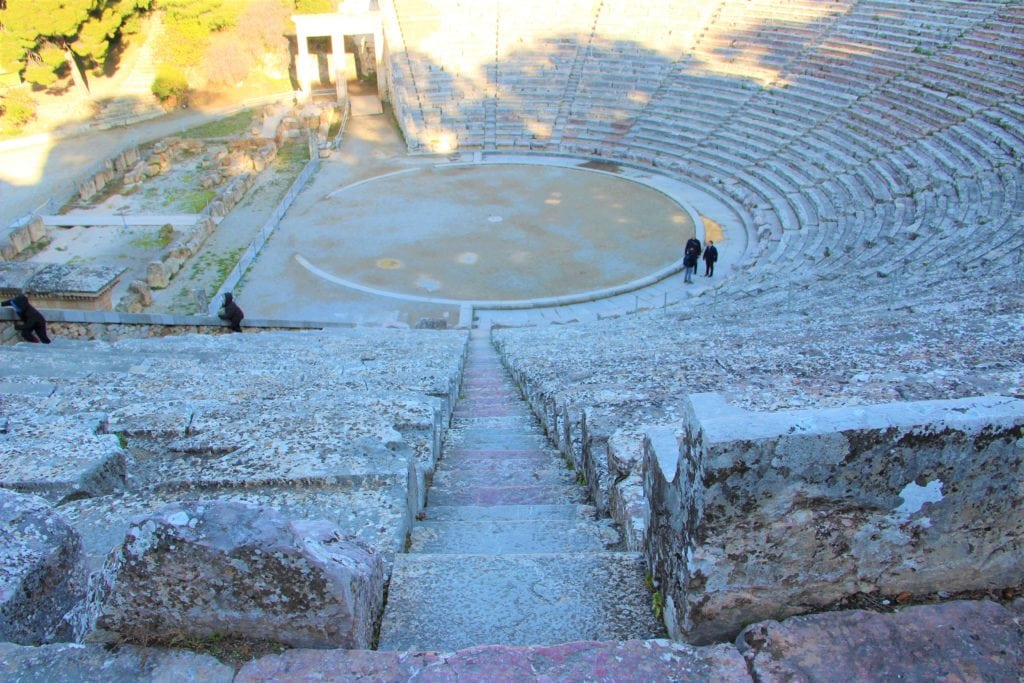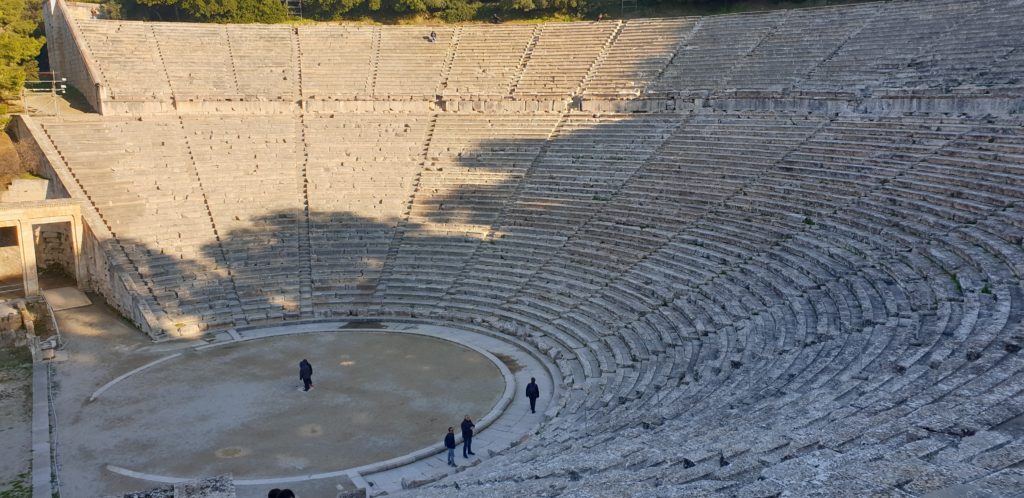The Remarkable and Ancient Epidaurus Theater
Nestled in the heart of Greece, the Epidaurus Theater stands as a breathtaking testament to ancient ingenuity and artistic expression.
Travelers seeking a journey through time will find this remarkable amphitheater not only a stunning architectural feat but also a vibrant connection to the cultural pulse of the ancient world.
With its perfect acoustics and captivating history, the Epidaurus Theater invites visitors to immerse themselves in the legacy of Greek theater, where the echoes of dramatic performances still linger in the air.
Join us as we explore the enchanting stories and breathtaking views that make the Epidaurus Theater a must-visit destination for adventurers and history buffs alike.
Video of the Epidaurus Theater
Before continuing to read this post, watch the following video to see what the Epidaurus Theater is like!
Watch the following video directly here or on YouTube at the link: https://youtu.be/rf-PAqB5Tk4. If you are reading this article from your smartphone, scroll to the bottom of the page and exit the mobile mode to view it directly on this page.
Let’s consider some information about the Epidaurus Theater!
Table of Contents for The Remarkable and Ancient Epidaurus Theater
How old is the Epidaurus Theater?
The Epidaurus Theater was erected at the end of the 4th century B.C.
Who built the theater of Epidaurus?
According to the ancient traveler Pausanias (2nd century A.D.), it was the work of the architect Polykleitos, who also built the Tholos in the same Sanctuary.

How many people could the original Theatre of Epidaurus seat?
The auditorium of the Theatre, the koilon or cavea, consists of two unequal parts, divided by a horizontal walkway known as the diazoma. The lower part is divided by 13 radiating staircases into 12 wedge-shaped segments, the kerkides or cunei, with 34 rows of seats each. At the upper part of the cave, 23 radiating passages divide it into 22 wedge-shaped segments with 20 rows of seats.
Each segment of the lower part corresponds to two segments of the upper part. The seats of the lowest row were provided with backrests and used as “prohedriae” (front seats of honor); similarly shaped were the upper part’s first-row seats. Uphill pathways outside the Theatre led on both sides to the horizontal passage, which divided the upper from the lower part of the cave.
It is estimated that the Epidaurus Theater could accommodate 12,000 spectators.
What is remarkable about the theater at Epidaurus?
Epidaurus Theater is a characteristic example of Hellenic theatres’ tripartite structure (orchestra – cavea – stage building). Its original form remained intact in Roman times, during which most Greek theatres underwent significant changes. The floor of the circular orchestra (diameter 20 m) is beaten earth. It is outlined in stone, while at its center, a circular base of an altar, the thymele, is preserved. A walkway surrounds the orchestra on the lower level, serving as a drain for rainwater.
The scene (stage building) in front of the orchestra and the cavea served the needs of the actors and had a parallel use as a storage room for theatrical equipment.
The scene building was composed of
- a rectangular oblong hall with two smaller square rooms on each side,
- a proscenium (stage), on whose facade was fixed panels representing the setting of each play,
- two ramps, one on each side, which provided access to the roof of the proscenium for the actors, and
- an upper storey of the scene building, of which no evidence has been preserved.
Scholars estimate that the total height of the stage building was 7.60 m. Spectators entered the Epidaurus Theater through two impressive gates on both sides of the stage building, between it and the lower part of the cave’s retaining wall of the cavea. The seats of the cavea were made out of local grey at reddish hard limestone, while for the stage building, a soft yellow limestone was used.
The cavea was constructed at the end of the 4th century B.C., while the stage building was modified during the 2nd century B.C. A characteristic feature of the Theatre was (and still is) its excellent acoustics. It had essentially to do with its design. The creation of the circular shape of the cavea was based on three centers. The eight central cunei corresponded to a circumference which had as center the center of the orchestra.
The two lateral cunei were designed with different centers, which lay further away from the orchestra’s center, providing a larger radius and, consequently, a larger circle. Besides its contribution to acoustics, this “opening” on the edges of the cave allowed a better view of those sitting in the lateral cunei.
What was the Theatre of Epidaurus used for?
The Theatre of the Sanctuary was closely connected to the cult of Asklepios.
During the festivals held in honor of the god, athletic games and musical and dramatic contests also took place. The latter was undoubtedly housed in the Theatre, where deep-rooted ceremonies were most probably closely connected with the cult.
Why is the Theatre at Epidaurus still famous?
Today theatrical plays are again performed in the Epidaurus Theater during the summer (Epidauros festival). The Theatre was excavated in 1881 by P. Kavvadias, who then carried out partial restorations. Restoration works by An. Orlandos took place in the monument in the years 1954-1963.
He then proceeded to reconstruct the proscenium, which was later removed. The Committee for the Conservation of the Epidauros Monuments restored the western parodos gate, the last upper western cuneus (1988-1999), and the ancient drains (1992-2007). A third program includes restoration works in the cavea and the stage building.
The Enduring Majesty of Epidaurus: Beyond the Theater
While the remarkably preserved Theater of Epidaurus rightfully draws significant attention, it represents only a part of the rich historical tapestry found within the Archaeological Site of the Sanctuary of Asklepios. This ancient sanctuary, dedicated to the god of healing, Asklepios, encompassed a diverse complex designed to promote both physical and spiritual well-being. Beyond the theater’s architectural brilliance and acoustic perfection, visitors can explore the remnants of the Abaton, where patients underwent incubation, the Tholos, a circular building of enigmatic purpose, and the Stadium, where athletic competitions were held. These elements, together, reveal the comprehensive nature of ancient Greek healing practices and the broader cultural significance of Epidaurus.
Featured image
Featured image for: The Remarkable and Ancient Epidaurus Theater

Related Posts
Epidaurus Theater – Related posts:
